Their Care, Preservation, and Staying True When Replacing Them
By John Robison of The Craftsman Homes Connection
“Bring out the nature of the materials. Let their nature intimately into your scheme.”
– Frank Lloyd Wright
We often give a lot of thought to window treatments, but how often do we consider floor treatments? Since floors are often a focal point of the well-appointed craftsman style home it makes sense to talk about what we can do to improve the looks and usability as well as avoid the pitfalls that can occur.
Arts & Crafts Carpets
Original Arts & Crafts carpets can be difficult to locate and after one hundred plus years they may not be in workable condition. The original carpets were hand knotted and had between fifteen and thirty knots per inch. That is very skimpy. Modern hand knotted carpets typically have about seventy-five knots per inch. That means there are a lot more knots to support the weight of each footstep. Many antique carpets were colored with vegetable dyes instead of the more modern aniline dyes. Vegetable dyes are particularly likely to fade or experience adverse color changes, especially if they get sun exposure. This is typically not a problem with the modern aniline dyes, at least not to the same extent. Consequently, with good care, a modern reproduction craftsman carpet will last a lot longer than an original. If you are able to locate an original carpet you may find that you prefer to display it like a tapestry rather than subject it to further punishing foot traffic. Luckily, many of the original designs featured in the influential vintage book by Malcolm Haslam entitled “Arts and Crafts Carpets” are available today. Consequently, you are able to achieve an authentic craftsman look while enjoying the modern construction and knot count and not worrying about damaging a museum piece. In addition, there are many interpretive designs that look original and are very complementary to your typical craftsman bungalow.
There are a number of actions you can take to improve the longevity of your rug. The number one most effective thing you can do is to have a good quality pad. A pad acts as a shock absorber and helps avoid punishing forces from affecting the knots. This is not the place to try and save five dollars. If you have a smaller sized rug that is prone to sliding around on the floor, there are pads available that have non-slip rubber on the floor side and a felt-like material with what feels like tiny little hooks that grab into the underside of the carpet. This type of pad is good at locking the rug in place. Pads come in standard sizes that fit machine made carpets well, but may not have exactly the right dimensions for the hand knotted wool rugs due to their variability. So it may be a good idea to get a pad from the rug dealer and let them cut a pad to fit your particular rug.
Another factor affecting longevity is keeping the rug clean. A rug should be vacuumed often to prevent dust from working it’s way into the knot area. Dust is a combination of organic and inorganic components. The inorganic part is very fine ground up rock, primarily silica… a common ingredient in sandpaper. So if you have a lot of dust in the carpet the abrasive particles in it will grind up the fibers as you walk around on it. It is best to just minimize the amount of dust by vacuuming. You can also have the rug washed periodically, but it is a good idea to avoid doing that too much if for no other reason than the expense it incurs. Never use a wall-to-wall carpet type cleaning company. They don’t have the equipment and level of knowledge needed for these special carpets. Always use a company that specializes in cleaning oriental-type carpets off-site. If you ask they will probably be glad to show you their cleaning equipment that is usually impressively large and has an immersion tank of some sort.
With proper care, it is probably that a modern craftsman rug could easily last 100 years.
Hardwood Floors
Most craftsman homes featured hardwood floors. In the main living areas, it was usually red oak (most likely), or white oak. Due to the excellent ability to avoid damage by exposure to water, kitchens and bathrooms often featured maple flooring. Sometimes, as a cost-cutting measure, homes would have a softwood such as fir in the bedrooms, the upstairs, or even in the entire house. Often craftsman homes would have inlays in a contrasting wood such as walnut or mahogany.
It is tempting to perk up a hardwood floor by just having it refinished. But keep in mind that this may have been done many times in the past and each time the floor gets thinner as it gets sanded. Usually, the floors started out at three-quarter inch thick. You’ll want to make sure that you are not on the edge of being perilously thin. If the floor is not that bad maybe you’ll just want to leave it alone since you can only sand a floor a certain number of times. Whatever the case, sanding a floor is a job best left to a professional. They have the skill and more importantly the type of sander that won’t take a “dish” out of the floor. This is not the case with the typical floor sanders that are available at most tool rental stores. A mistake made in this sanding process is not easy to fix.
Nothing says “craftsman home” like a hardwood floor. For authenticity, it is not wise to cover them up with wall to wall carpeting, which was not even invented until many years later. The most appropriate look for the period is natural floors with carefully selected wool rugs.
For the craftsman house that has forced air heat, there are sometimes very mystifying situations that occur. Many of these homes did not even have central heat when first built. At some point, someone may have run ducting and cut holes for heat registers. Often the style of heat register is objectionable and inappropriate. Sometimes walls have been moved or removed and a previously hidden register is now exposed and fully in a traffic pattern. Unlike today, cold air returns were often located in the floor, which made them susceptible to damage. Furthermore, the air returns were often made on site and did not conform to any generally accepted dimensions.
It is very common to see oak eggcrate style cold air returns in the floor and for some perplexing reason, they are often in a hallway, bottom of the stairs, or some other location where they are easily damaged. An eggcrate register has square or rectangular openings and looks particularly good with the linear craftsman style. The originals usually had very loose joinery and may not have used glue in the joints. Modern replicas are made much better. Often the sizing on these air returns was very large, and that is problematic. Depending on the dimensions some kind of support may have to be developed to make sure it is structurally sound.
If you are lucky enough to have a rectangle shape instead of a square, this is usually a more rigid design and might not even need extra bracing. Although eggcrate air returns were common, this style was not used for heat registers. However, eggcrate heat registers are available today and this can be viewed as one of the best interpretive designs that the original homebuilders would probably have been very enthusiastic about. Consider that style for wall, floor, or ceiling.
Also worthy of mention are heat registers and air returns that are made of bronze castings. Typical metal finishes were dark and not highly polished. So cast iron, cast bronze, copper, and black are appropriate for main living areas. A metal finish to avoid would be polished brass, in general. However, in the kitchen and bathroom areas polished or brushed nickel was the finish of choice. This was due in part to the recently developed germ theory of disease, which mandated “sanitary” surfaces.
It is not uncommon to find that existing duct openings are not standard sizes. They may be unusual dimensions, or they may be located too close to a wall and thus not have room for a standard flange on one long side. It is possible to get a high style craftsman vent cover for these, but you won’t find it from your local big box store.
One suggestion: never discard heat registers until you locate good replacement ones. This especially applies to the baseboard registers often used with old gravity style systems that have one large flapper for a damper. That style is not generally available and you may wish you had them back if you got rid of them. Often the original ones can be made to work again by tightening screws and nuts located on the back. There also may be paint stripped or plating involved to get a real quality look.
The most important concept to remember is to stay true to the style of the house. Fads come and fads go. A craftsman home decorated in the industrial style may look trendy for a couple of years, but after that, it may look somewhat untrue. Staying faithful to the original style of the home will never become obsolete.




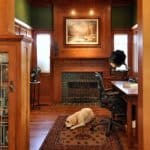

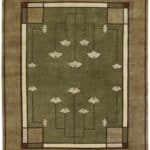
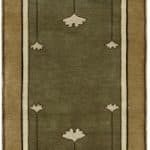

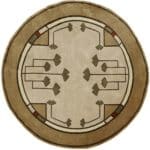
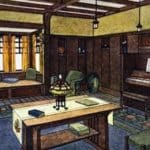
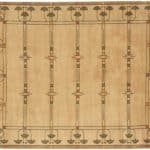
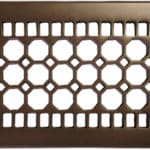

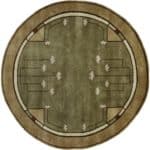
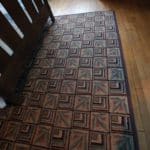
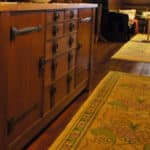
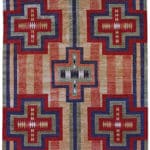



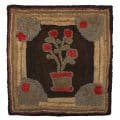


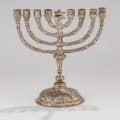


Pingback: Ocean Liners: Glamour, Speed, and Style - Rjanti Queattic